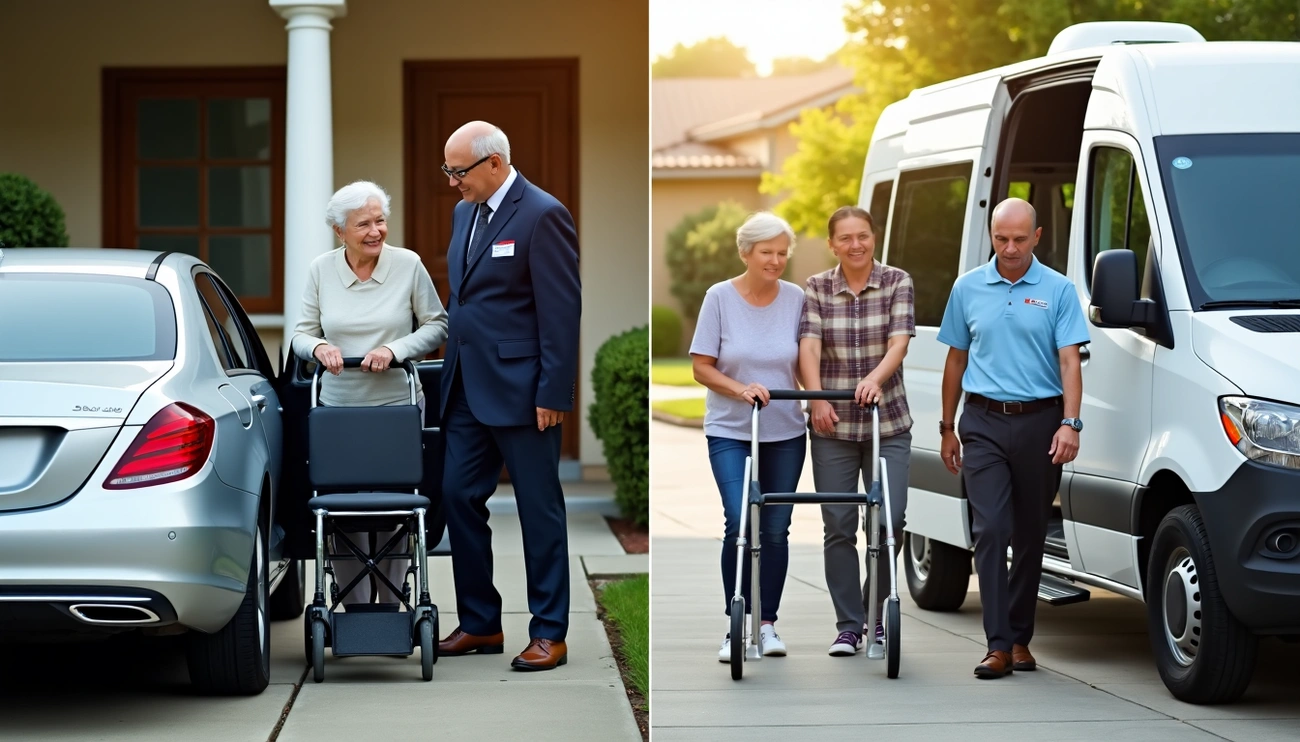Intergenerational programs for seniors bridge the gap between different age groups through ongoing, mutually beneficial activities, promoting greater understanding, respect, and collaboration. These initiatives encompass a wide array of activities, from mentoring and community service to service learning and workforce development, aiming to improve social, health, academic, and economic outcomes while fostering healthier lifestyles and reducing social isolation. Tailored to address various goals, including academic achievement, mental and physical health, social inclusion, and more, these programs support all participants, from children to older adults, enhancing social-emotional learning, volunteer opportunities, and creating positive role models.
By nurturing intergenerational relationships, programs for senior citizens play a pivotal role in community building, offering seniors enhanced social networks, a renewed sense of purpose, and access to public policies that support their well-being. The benefits extend across age groups, improving dietary and nutrition habits, increasing physical activity, and enhancing mood management among others. Furthermore, by engaging in these programs, participants experience improved self-confidence, civic engagement, problem-solving skills, and reduced ageism, paving the way for stronger, more cohesive communities.
The Essence of Intergenerational Learning
Intergenerational programs for seniors are pivotal in fostering connections across different age groups, addressing critical social issues while promoting cultural continuity and mutual learning. Here are some key aspects of these programs:
- Social and Cultural Benefits:
- These programs actively combat social isolation and provide a platform for cultural exchange, allowing different generations to share stories, traditions, and values, thus preserving cultural identity.
- They offer a unique space for children and youth who lack elder family members, filling a vital social gap and providing the benefits of elder guidance and wisdom.
- Educational and Health Benefits:
- Participants, especially seniors, experience significant health benefits; engaging with younger people helps reduce isolation, depression, and cognitive decline. Remarkably, seniors involved in these activities report increased physical activity and improved memory.
- For children, intergenerational interactions are not just about learning from elders but also about improving academic performance. Studies show enhancements in reading scores and communication skills, fostering a well-rounded educational experience.
- Structural and Community Impact:
- Effective intergenerational programs are characterized by key features such as reciprocity, sustainability, and intentionality. These aspects ensure that both young and old participants benefit mutually, contributing to a stronger community fabric.
- Programs that successfully integrate these elements tend to see higher levels of engagement and satisfaction among participants, leading to lasting impacts on community cohesion and individual well-being.
By embracing these structured interactions, intergenerational programs not only bridge the generational divide but also enrich the social, educational, and cultural fabric of communities, making them resilient and inclusive.
Benefits for Young Participants
Intergenerational programs for seniors not only benefit older adults but significantly enrich the lives of younger participants in various impactful ways:
- Academic and Cognitive Enhancements:
- Younger participants often see improvements in academic performance, including higher test scores and better attendance rates, through structured interactions with seniors.
- Engagement in these programs fosters literacy and enhances communication skills, contributing to better overall academic outcomes.
- Social and Emotional Development:
- Intergenerational activities enhance social skills and self-confidence among the youth. These programs provide a platform for young individuals to express themselves and interact in diverse social settings.
- Through these interactions, younger participants develop a deeper understanding and empathy towards older adults, which can help reduce age-related stereotypes and promote more inclusive attitudes.
- Health and Lifestyle:
- Participation in activities with seniors often involves physical components, which encourage a healthier lifestyle and can decrease the risk of chronic diseases in younger individuals.
- The emotional support and understanding provided by older adults during these programs help improve the mood and mental health of younger participants, fostering a sense of well-being and community belonging.
These benefits highlight the profound impact that intergenerational programs can have on the personal and developmental aspects of younger individuals, making these initiatives a valuable component of community and educational systems.
Benefits for Older Participants
Intergenerational programs for seniors offer substantial benefits that enhance both their physical and mental well-being, fostering a sense of community and purpose. Here are some of the key advantages:
- Health and Physical Activity:
- Engaging with younger generations motivates seniors to be more physically active, which is crucial for maintaining health. Regular participation in these activities leads to burning more calories, experiencing fewer falls, and showing improved performance on memory tests compared to less active peers.
- These programs also play a significant role in mitigating the effects of isolation and depression among seniors, contributing to better mental health and enhanced quality of life.
- Social Roles and Emotional Well-being:
- Intergenerational interactions provide seniors with valuable roles within the community, such as mentors or surrogate grandparents, enriching their social lives and boosting their self-worth and confidence.
- The shared experiences and storytelling not only preserve cultural traditions but also improve the understanding of diverse lifestyles, enhancing emotional well-being and fostering mutual respect.
- Cognitive and Social Benefits:
- Mentoring younger individuals allows seniors to pass on their knowledge and wisdom, providing cognitive stimulation and maintaining their mental agility.
- These relationships help dispel negative stereotypes and reduce generational conflicts, promoting a more inclusive and understanding community environment.
By participating in these programs, seniors not only enrich their own lives but also contribute significantly to the social and emotional development of younger generations, creating a supportive and interconnected community.
Building Bridges Between Generations
Intergenerational programs are crucial in building bridges between generations, fostering understanding, and enhancing community cohesion. Here are some innovative examples and key strategies:
- Innovative Programs and Initiatives:
- The ‘Grandmentors’ program in England pairs older volunteers with young people leaving foster care to help them navigate independent living challenges.
- CIRKEL facilitates networking events, matching individuals from different generations based on their mentoring and professional development needs.
- During the pandemic, mutual aid groups emerged, promoting intergenerational solidarity and cooperation.
- Strategic Approaches to Intergenerational Integration:
- Businesses are increasingly encouraging strategies like reverse mentoring to enhance communication and productivity between young and older employees.
- Generations Working Together is pushing for Scotland to become the first intergenerational nation by 2030, advocating for policies that integrate generational perspectives more broadly.
- Cultural and Community Impact:
- National and community-based campaigns like the UK’s first ‘National Intergenerational Week’ and online initiatives by Generations Working Together highlight and promote intergenerational projects.
- Shared activities not only focus on productivity but also emphasize enjoyment and cultural exchange, reinforcing community bonds and mutual respect.
These efforts illustrate the dynamic ways in which societies are working to reinforce intergenerational relationships, thereby enriching both individual lives and community well-being.
Challenges and Solutions
Intergenerational programs, while beneficial, encounter several challenges that necessitate strategic solutions to enhance effectiveness and sustainability:
- Resource and Accessibility Challenges:
- Space and Equipment: Programs often struggle with securing appropriate venues and necessary equipment, which can hinder activities.
- Travel and Attrition: Providing travel support is crucial as lack of it can lead to high dropout rates.
- Recommendations: Develop partnerships with local organizations for resource sharing and establish reliable transportation options to reduce attrition.
- Program Evaluation and Technology Utilization:
- Anecdotal Evidence: Many programs rely on anecdotal outcomes rather than robust statistical evaluations, limiting the understanding of their true impact.
- Technology Integration: Face-to-face models dominate, underutilizing technology that could facilitate broader and more inclusive interactions.
- Recommendations: Emphasize the need for rigorous, longitudinal studies to assess impacts comprehensively. Incorporate online platforms to maintain program continuity, especially during unforeseen disruptions like the COVID-19 pandemic.
- Operational and Regulatory Challenges:
- Intergenerational Dynamics: Misconceptions and resistance to sharing spaces can occur, with concerns about health and safety being predominant.
- Regulatory Compliance: Navigating conflicting regulations at various governmental levels can be challenging for shared site programs.
- Recommendations: Regular training for staff and participants can help in easing misconceptions and enhancing cooperation. Ensure that all activities comply with applicable laws and regulations, seeking expert advice if necessary.
Conclusion
Throughout this comprehensive exploration, we’ve journeyed through the myriad benefits and dynamic facets of intergenerational programs for seniors, highlighting their pivotal role in bridging generational divides, enhancing educational and health outcomes, and knitting tighter community bonds. These programs, flourishing in diverse forms, not only combat [social isolation among seniors](https://seniorsite.org/resource/the-rise-of-technology-in-senior-care-enhancing-lives-and-empowering-independence/) but also embolden younger generations with improved academic performance, empathy, and a healthier lifestyle. The essence of intergenerational learning and shared experiences, as unveiled, serves as a cornerstone for fostering communal harmony and understanding across age groups.
The call to action is clear: as communities and individuals, there’s a compelling need to support and advocate for the expansion of these enriching programs. By addressing the challenges head-on and leveraging innovative strategies and technology, we can enhance the effectiveness and reach of intergenerational initiatives. Together, we stand at the threshold of an opportunity to mold an inclusive, supportive, and interconnected society that values and actively cultivates the wisdom and vitality that flows from one generation to the next, thereby enriching the fabric of our communities for years to come.
FAQs
What activities can seniors and young people do together?
Reading together is a prime example of an intergenerational activity that benefits both seniors and youth. It involves taking turns reading a book, which is an affordable and low-energy activity suitable for family members of all ages. This activity fosters a warm, secure, and enjoyable environment, allowing both grandparents and grandchildren to enjoy quality time together.
Can you give an example of an intergenerational program?
Examples of intergenerational programs include activities such as cooking, gardening, or playing musical instruments. These activities help bring together family members, neighbors, and community members, facilitating the building of meaningful relationships and the acquisition of new skills.
What are the primary objectives of intergenerational programs?
Intergenerational programs are designed to enhance interaction and understanding across different age groups. Their goals include fostering meaningful relationships, promoting emotional and social growth, and supporting educational or community objectives.
What advantages do intergenerational programs offer to older adults?
Intergenerational programs provide numerous benefits for seniors and the broader community. These programs help bridge the gap between different age groups, break down stereotypes, and reduce feelings of alienation. They also highlight the valuable contributions that individuals of all ages can make to society.












